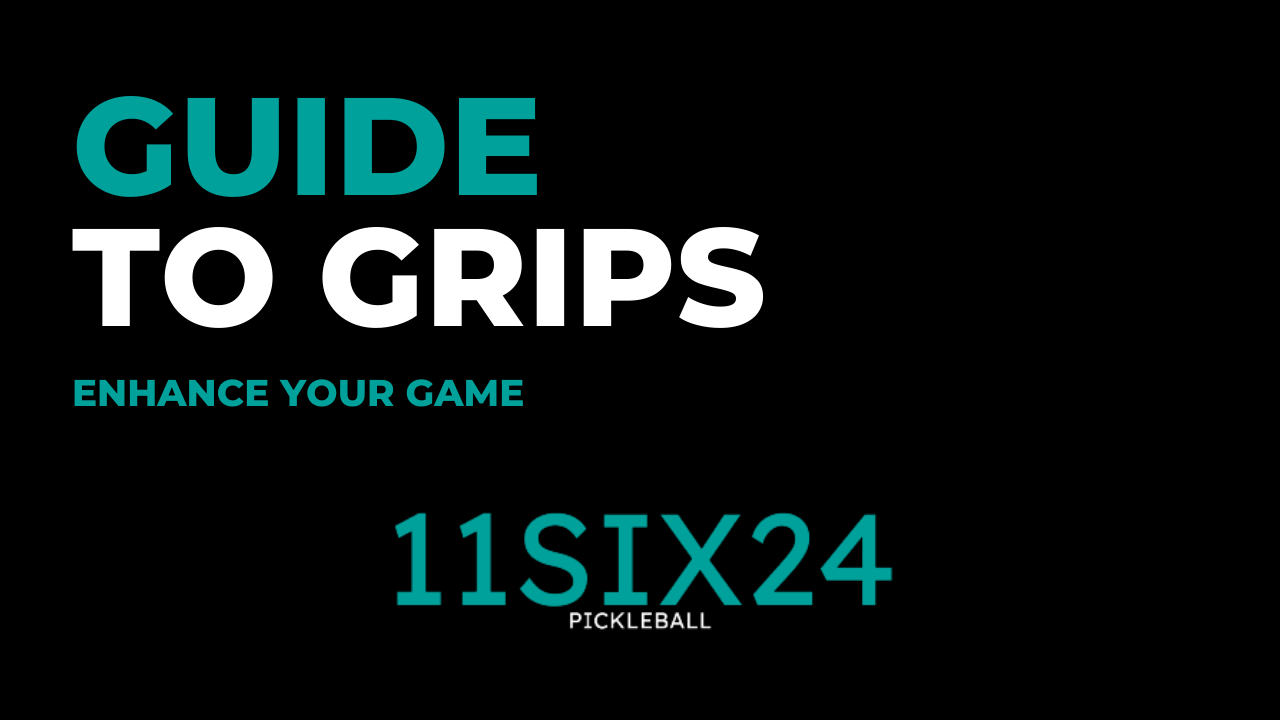A Comprehensive Guide to Pickleball Grips and Grip Techniques: Enhance Your Game with the Right Grip

The grip is an essential aspect of pickleball that significantly impacts your performance on the court. By understanding the different types of grips and grip techniques, you can optimize your control, power, and accuracy. In this comprehensive guide, we will explore various pickleball grips and techniques to help you find the perfect hold for your game.
The Main Types of Pickleball Grip Techniques
The Eastern Grip
The Eastern grip is the most common and versatile grip used in pickleball. To achieve this grip, place the base knuckle of your index finger on the third bevel of the paddle's handle. This grip provides excellent control and is suitable for various shots, including serves, dinks, and groundstrokes.
The Continental Grip
The Continental grip, sometimes called the "hammer grip," is another popular option for pickleball players. Position the base knuckle of your index finger on the second bevel of the paddle's handle. This grip is particularly effective for backhand shots and volleys, offering increased stability and control.
The Semi-Western Grip
The Semi-Western grip is less common in pickleball but is favored by some players for its added topspin potential. Place the base knuckle of your index finger on the fourth bevel of the paddle's handle. This grip is ideal for generating topspin on groundstrokes, making it harder for your opponent to return the ball.
Grip Techniques for Improved Performance
The Relaxed Grip
A relaxed grip is essential for maintaining control and touch during play. Avoid squeezing the paddle handle too tightly, as this can lead to reduced wrist mobility and decreased shot accuracy. Instead, hold the paddle with a firm yet relaxed grip, allowing for increased control and finesse.
Grip Transitioning
Transitioning between different grips during a match is crucial for executing a variety of shots effectively. For instance, switching from an Eastern grip for groundstrokes to a Continental grip for volleys enables you to adapt to the situation and maintain control over the ball. Practice transitioning smoothly between grips to enhance your shot-making capabilities.
Proper Paddle Positioning
Align your paddle with your hand's heel pad and wrap your fingers around the handle. Your thumb should rest against the back of the handle, providing additional support and stability. This alignment ensures optimal control and power transfer during shot execution.
Grip Size and Comfort
Choosing the right grip size for your hand is vital for comfort, control, and injury prevention. A grip that is too small may result in reduced control and increased strain on your wrist and forearm, while a grip that is too large can be difficult to maneuver. Measure your hand size and consult a sizing chart or expert to find the ideal grip size for you.
Maintaining and Caring for Your Pickleball Grip
Overgrips
Overgrips are thin, removable wraps that can be applied to your paddle's handle to enhance grip and comfort. They are available in various textures and thicknesses, allowing you to customize the feel of your paddle. Regularly replace your overgrip to maintain optimal grip performance and hygiene.
Grip Replacement
Over time, your paddle's grip may wear down or become less effective. When you notice a decline in grip performance, consider replacing thegrip with a new one. Replacing a worn grip will not only improve your control and comfort but also reduce the risk of injury caused by a slippery or uncomfortable handle.
Mastering the various pickleball grips and grip techniques is essential for elevating your performance on the court. By understanding the differences between the Eastern, Continental, and Semi-Western grips, you can choose the best grip for your playing style. Additionally, focusing on maintaining a relaxed grip, transitioning between grips, and ensuring proper paddle positioning will further enhance your control and shot accuracy.
Don't forget the importance of grip size, as selecting the correct grip size for your hand is crucial for comfort and injury prevention. Finally, proper maintenance and care of your pickleball grip, including the use of overgrips, regular cleaning, and timely replacement, will ensure optimal grip performance and a more enjoyable playing experience.
By implementing these tips and techniques in your game, you'll be well on your way to becoming a more effective and confident pickleball player.

